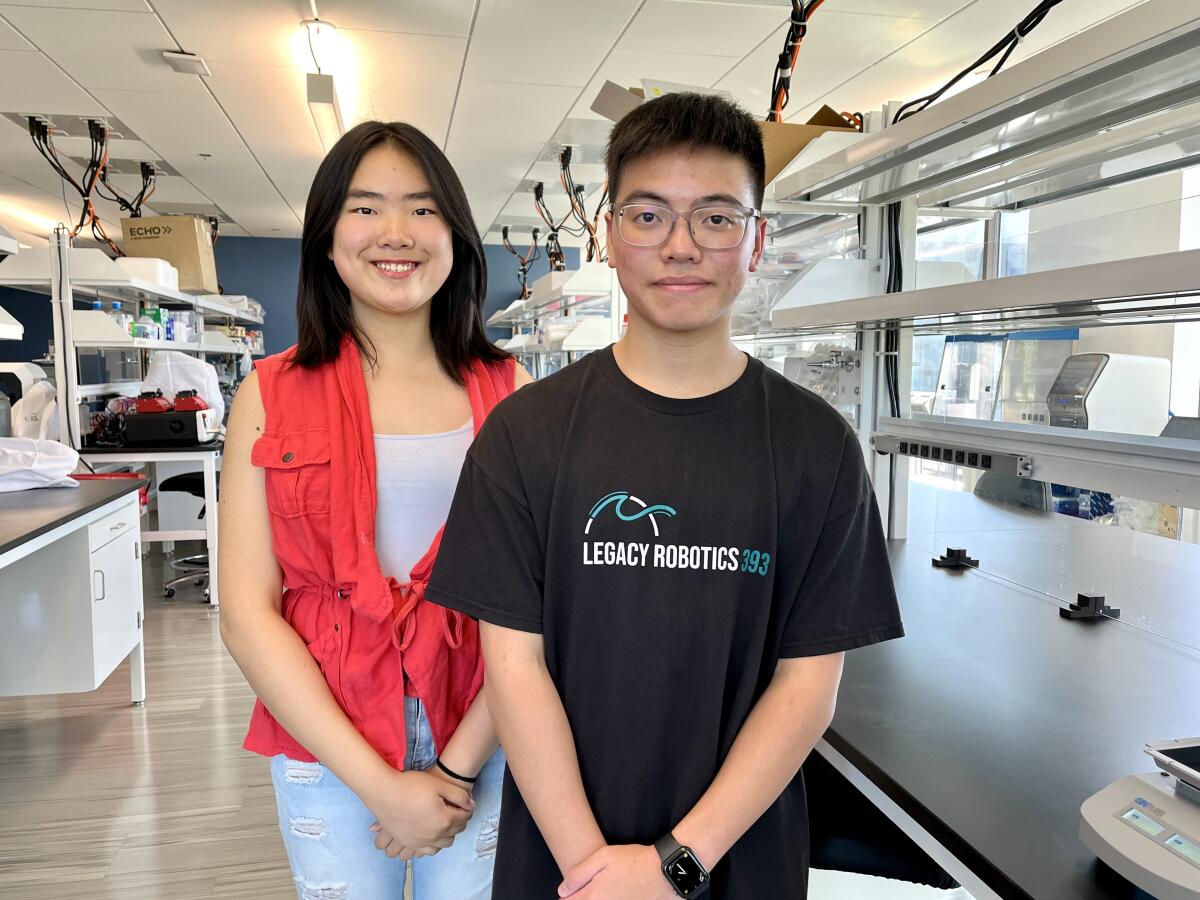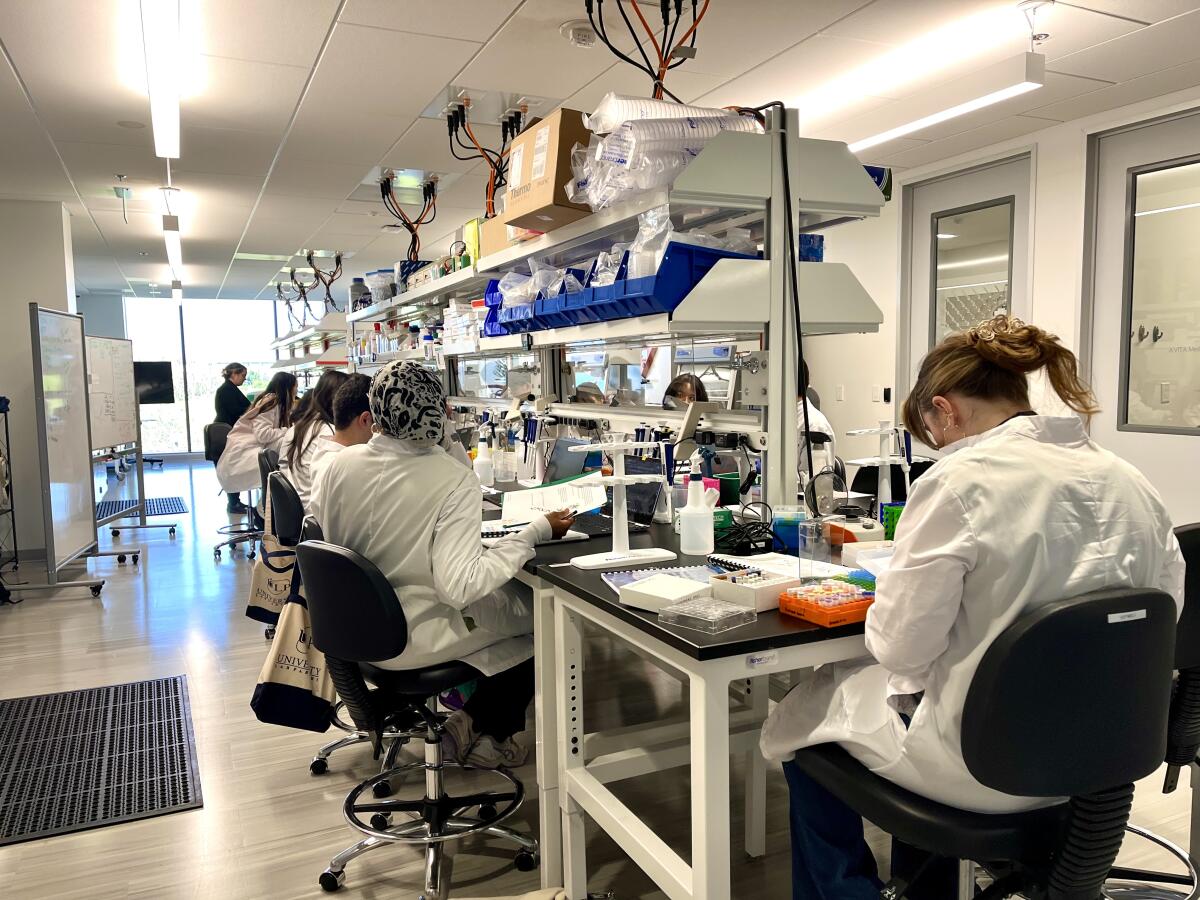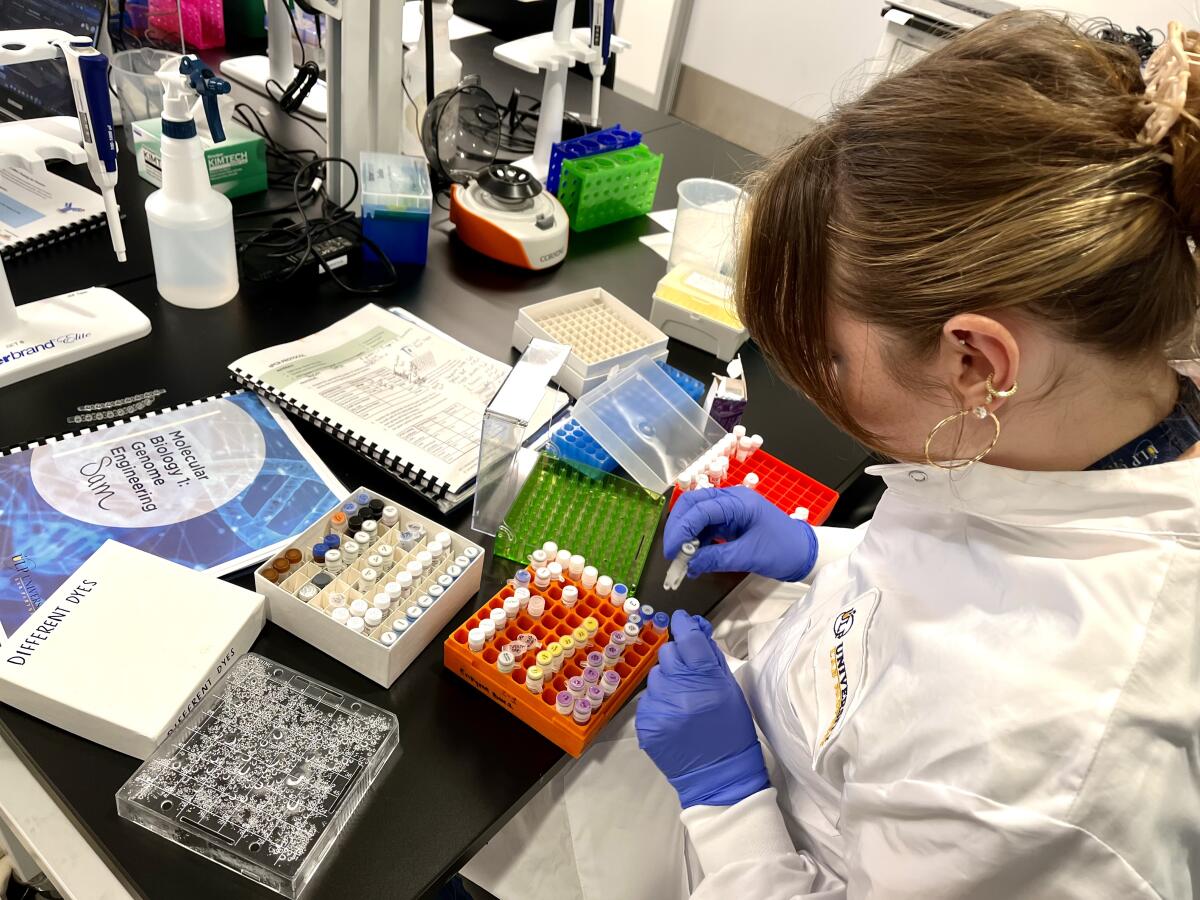STEM-based program in Irvine fosters the next generation of med tech talent

When Erica Zhang heard about MIRE, a STEM-based program for high school students over the morning announcements at Valencia High School in Placentia, she perked up.
“I have always had an interest in science, but it grew even more in middle school after I did Science Olympiad,” said Zhang.
Zhang aspires to a career in science and jumped at the chance to try something new.
“I thought it sounded like a really good opportunity, and I should definitely do it,” she said.
MIRE, the Medical Innovation, Research and Entrepreneurship program, is one of the ways University Lab Partners in Irvine is working to foster the next generation of STEM leaders and innovative life sciences talent.
“The mission is really to expand the diversity of our innovation economy,” said Karin Koch University Lab Partners’ executive director.
University Lab Partners is an Orange County-based independent, nonprofit, wet lab and medical technology incubator located within UCI’s Research Park. ULP provides start-ups and med tech companies a co-working space with the equipment and resources to take an idea from research and intellectual property development to commercially viable enterprises and domestically manufactured products.
The MIRE program was created in partnership with CHOC Research Institute in the summer of 2020, partly as a way to create a strong talent pipeline from Orange County schools to University Lab Partners.
“Through the MIRE program, we are able to offer an immersive career exploration experience that not only inspires and educates the next generation of STEM leaders but also lays the foundation for their future contributions in the field,” said Koch.
The development of medical innovation can be hidden from students and even some adults. During the first months of COVID-19, ULP saw an opportunity to demonstrate to students how life science and med tech effects them.
“In the summer of COVID, we said students need to understand why this pandemic is happening and also the innovation that is happening right now to combat this real-life, worldwide crisis,” said Koch. “We delivered this program with 20 students in our first cohort.”
The most recent Spring 2024 MIRE cohort, which ran from Jan. 9 through March 21, welcomed 75 students from three Orange County Regional Occupational Programs or ROP, which spans 12 local school districts.

Anthony Hsieh, a junior at Legacy Magnet Academy in Tustin, has a busy after-school schedule. When he isn’t volunteering at the Petersen Automotive Museum or taking classes at IVC, he is captaining his school’s robotics team. But like Zhang, he decided to add the MIRE program to his workload and once a week dons a lab coat after school for ULP’s research program for high school students. During the class, he gets the chance to learn about wet lab techniques and technologies at University Lab Partners with education program manger, Samantha Renusch.
“The mentor/mentee relationship I fostered with Sam has probably been one of the most rewarding parts,” said Hsieh. “If I have a question I can always ask my team, but if we couldn’t figure it out I could ask my mentor.”
Hsieh and Zhang were both part of winning teams in a recent MIRE competition. During the 11-week work-based learning experience, students worked to solve an existing unmet pediatric clinical needs problem presented by Children’s Hospital of Orange County. Hsieh was recognized for his team’s poster presentation on “Wandersync,” a gait-tracking app for parents of children with diabetes.
While Hsieh enjoyed working on the project and gaining knowledge on medical technology, he said the program opened his eyes to the entrepreneurial part of the industry.
“You can actually take what you are thinking and turn it into a company if you believe what you are working on is successful,” said Hsieh.
Zhang’s team won the video competition for “Heart Heroes,” a pediatric heart monitor designed to collect electrocardiogram data. The device would be worn as a patch with adhesive from medical-grade silicone, with different colors and shapes Zhang and her team designed.
“We wanted kids to feel empowered by the patch and not burdened by it,” said Zhang.
While Hsieh and Zhang both already had an interest in science before MIRE, Koch said ULP is working to reach a diverse population of students who maybe hasn’t discovered that interest yet.

“When we launched this program, we were very strategic in not putting this class in biology honors classrooms. We love the bio honors kids, but those kids are already engaged in a highly rigorous program through their high school,” said Koch.
Instead, ULP intentionally put MIRE into Regional Occupational Programs in Orange County, where the focus is on career technical education and where students might or might not be pursuing higher education.
“That really is a tenant of MIRE, is to bring more access, and that is in how you deliver the program,” said Koch.
Koch believes connecting students, like Hsieh and Zhang, who are career-focused and enthusiastic about networking with other like-minded individuals, bodes well for everyone’s future.
“If we don’t bring this innovation economy and thought-leadership for students, innovation is going to become stagnate, ” said Koch. “The folks in high school now are going to decide what your future and my future looks like.”
All the latest on Orange County from Orange County.
Get our free TimesOC newsletter.
You may occasionally receive promotional content from the Daily Pilot.




